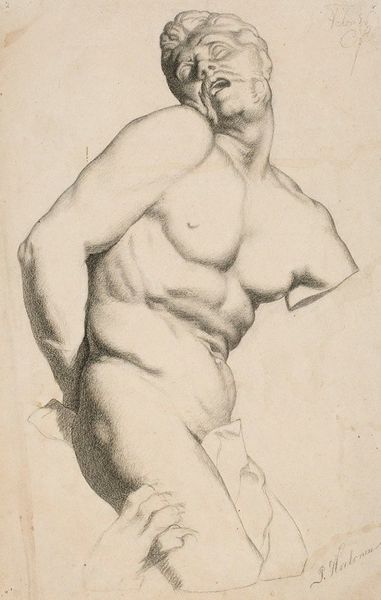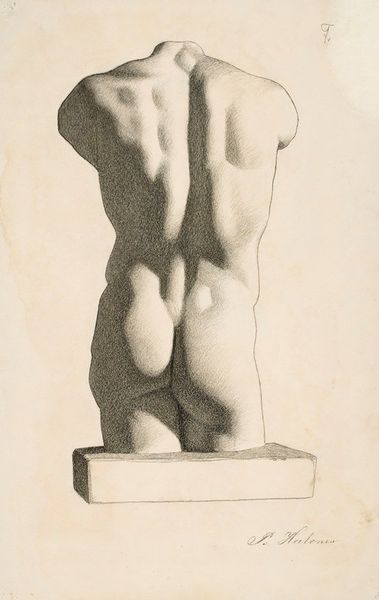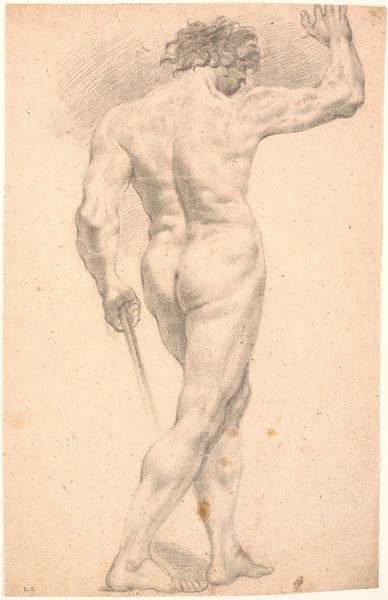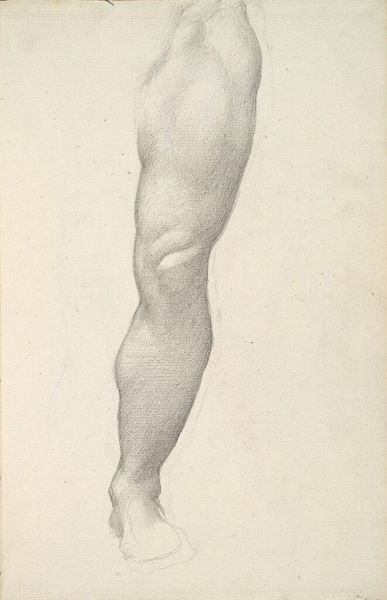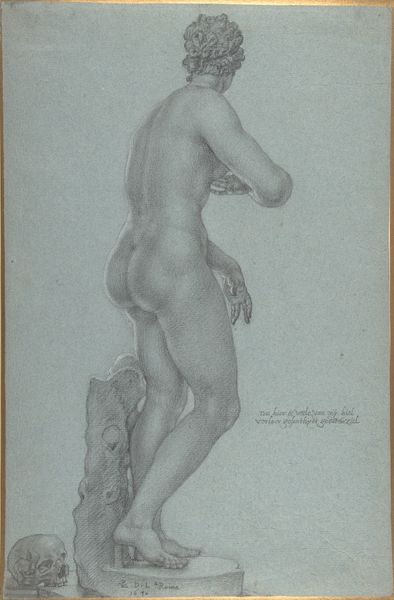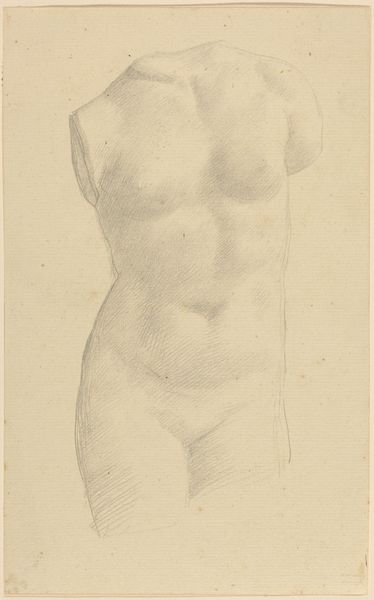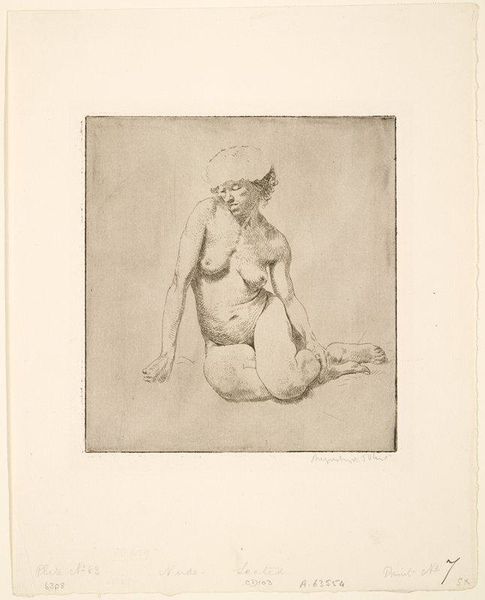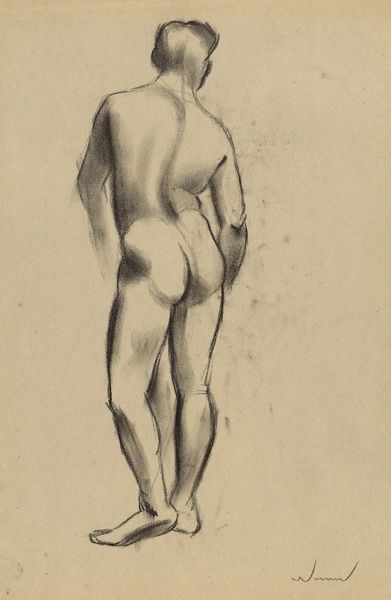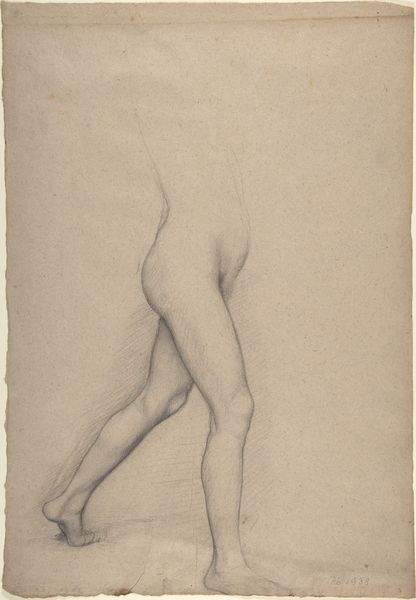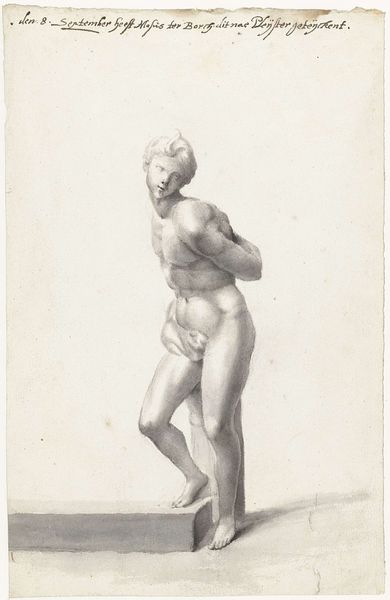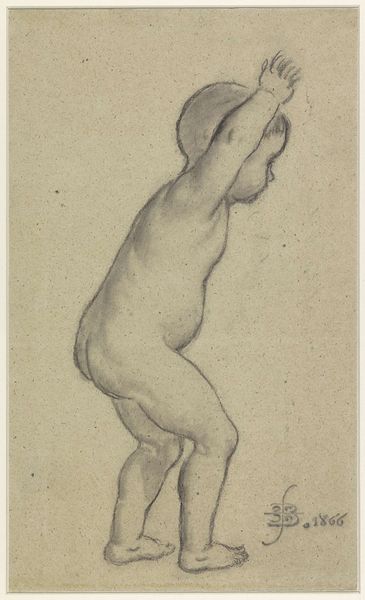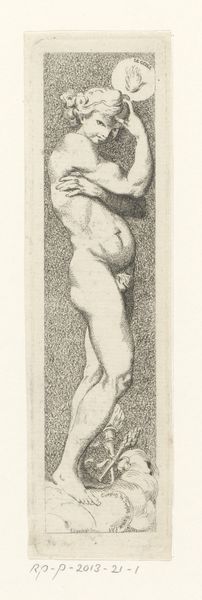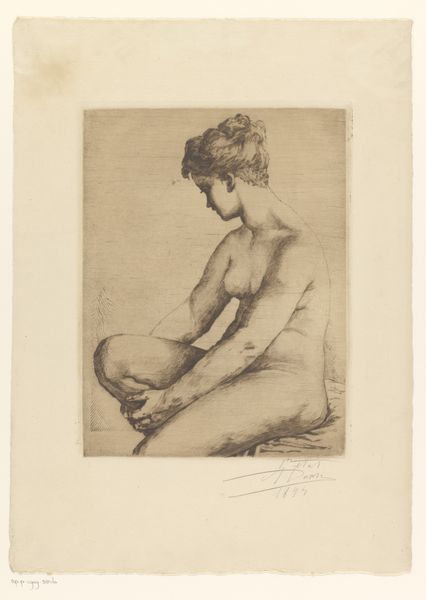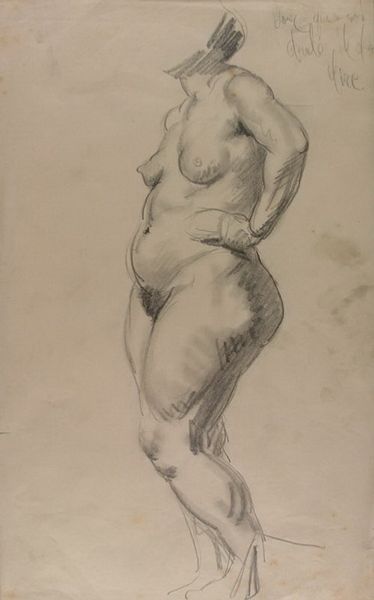
drawing, graphite
#
pencil drawn
#
drawing
#
charcoal drawing
#
figuration
#
pencil drawing
#
graphite
#
academic-art
#
nude
#
graphite
#
realism
Dimensions: height 233 mm, width 169 mm
Copyright: Rijks Museum: Open Domain
Herman Lowenstam made this study of a child’s nude torso from life, in 1889, using etching and engraving. Take a close look, and you'll see that the tonal range is achieved through an intricate network of fine lines. The engraver uses a tool called a burin to manually cut lines into a metal plate. Ink is then applied to the plate, and then wiped clean from the surface, remaining only in the incised lines. Finally, the plate is pressed onto paper, transferring the image. Etching, which seems to be used here for the broader areas of tone, involves drawing with a needle on a wax ground laid over a metal plate, which is then exposed to acid. The engraver’s skill is paramount: each line must be precise, dictating the image’s texture and form. The controlled, meticulous labour involved in the production process is at odds with the softness of the young skin rendered. This contrast highlights how the value of prints lies not only in their aesthetic qualities, but also in the labour and skill embedded within the work.
Comments
No comments
Be the first to comment and join the conversation on the ultimate creative platform.
